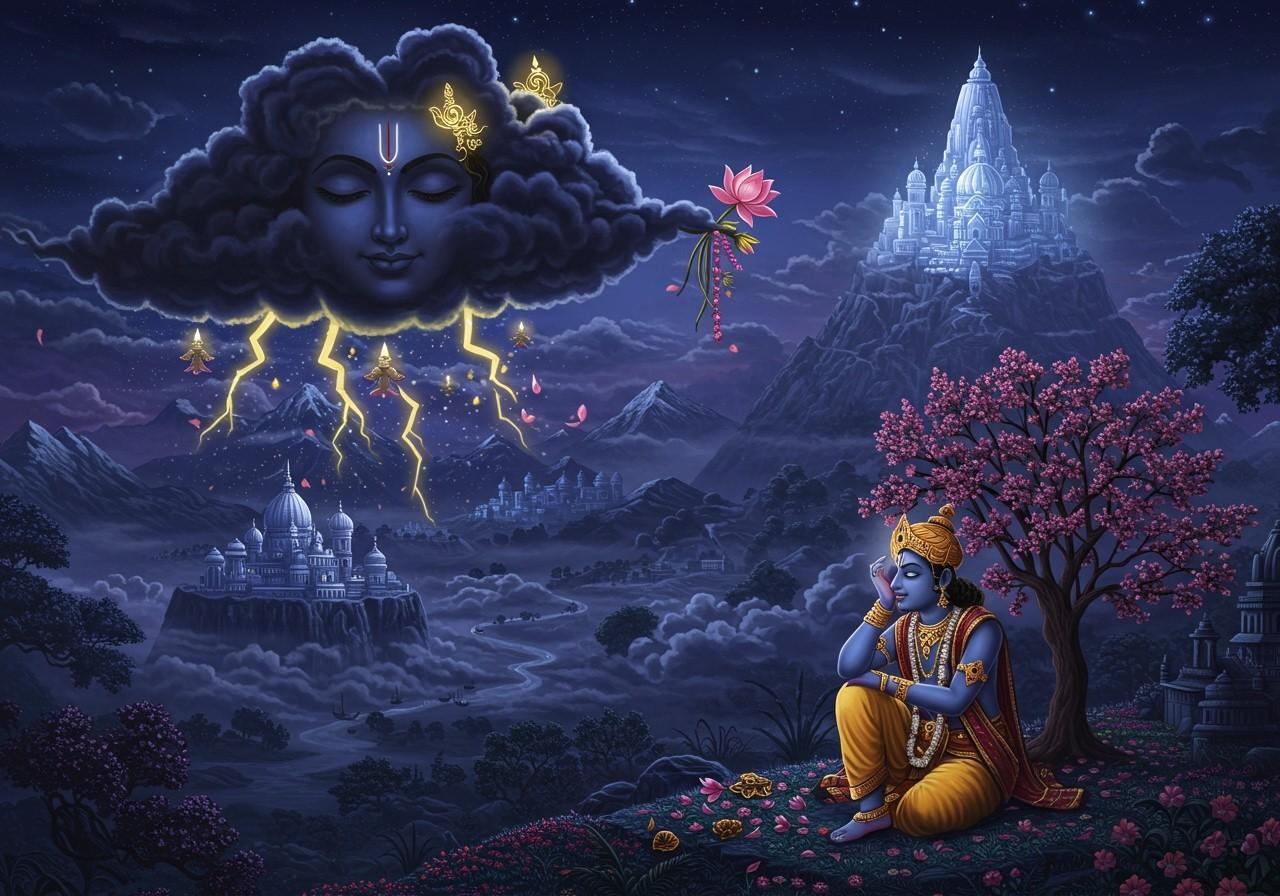
Meghadūta, meaning “cloud messenger,” is a timeless masterpiece by the classical Sanskrit poet Kalidasa. This blog post delves into the poem’s origins, exploring its profound meanings and enduring cultural significance. It aims to provide a comprehensive analysis that resonates with those who appreciate India’s rich literary heritage.
The Poet Behind the Masterpiece: Kalidasa
Kalidasa, often hailed as the greatest poet and dramatist in classical Sanskrit literature, is the celebrated author of Meghadūta. His works, renowned for their poetic beauty and philosophical depth, continue to captivate audiences. Flourishing during the Gupta period (circa 4th-5th century CE), Kalidasa also penned other notable works such as Abhijnanashakuntalam, Raghuvamsha, and Kumarasambhava, each contributing significantly to India’s literary tapestry.
Dating Meghadūta: A Glimpse into the Gupta Era
Meghadūta is believed to have been composed during the Gupta period (4th-6th centuries CE), a period often referred to as the Golden Age of India. Marked by significant advancements in art, literature, and science, this era provided a fertile ground for creative expression. While the exact date remains uncertain, scholarly consensus places its composition around the 5th century CE, a time of relative peace and prosperity that fostered artistic flourishing.
Meghadūta: A Lyrical Narrative of Love and Separation
Meghadūta is a lyrical poem narrating a poignant love story through the unusual medium of a cloud. Divided into two parts—Purvamegha (Previous cloud) and Uttaramegha (Consequent cloud)—the 111 stanzas paint a vivid picture of love, longing, and the beauty of the natural world.
- The story revolves around a Yaksha (a nature deity), banished by his lord Kubera for neglecting his duties. Separated from his beloved wife, he pours his heart into a message carried by a passing cloud. This message forms the core of the poem, expressing the Yaksha’s deep longing and the pain of separation.
- The cloud’s journey across the Indian subcontinent becomes a canvas for Kalidasa’s descriptive brilliance. He meticulously portrays the landscapes, flora, and fauna, creating a rich tapestry of India’s natural beauty. This journey not only delivers the Yaksha’s message but also provides a breathtaking tour of the subcontinent’s diverse landscapes.
Meghadūta is celebrated for its masterful use of literary devices. Metaphors, similes, and personification breathe life into the natural world, enhancing the poem’s emotional impact and aesthetic appeal.
Themes and Symbolism: Delving Deeper into Meghadūta
Love, separation, and longing are the central themes woven throughout Meghadūta. The cloud acts as a potent symbol of hope and connection, bridging the physical and emotional chasm between the Yaksha and his wife. The cloud’s journey can also be interpreted as a metaphor for the human experience of longing and the search for connection.
Cultural Significance: Meghadūta’s Enduring Legacy
Meghadūta holds a revered position in India’s literary and cultural heritage. Its artistic merit and emotional depth have resonated for centuries, inspiring various art forms, including painting, music, and dance. The poem provides a unique window into the natural beauty and cultural richness of ancient India.
The Importance of Communication
Communication takes center stage in Meghadūta. The Yaksha’s heartfelt message emphasizes the importance of expressing love and emotions, especially in the face of separation. The cloud, as the messenger, embodies hope and the persistent human desire for connection, even across vast distances.
Emotional Resonance
The universal themes of love, separation, and longing make Meghadūta profoundly relatable even today. The Yaksha’s yearning for his wife reflects the enduring power of human connection and the pain of separation. Kalidasa’s rich imagery and symbolism amplify the emotional depth, allowing readers to empathize with the Yaksha’s experience.
Artistic Brilliance
Meghadūta showcases Kalidasa’s mastery of poetic language. His use of metaphors, similes, and personification brings the natural world to life, making the cloud’s journey a vivid and immersive experience for the reader. The poem’s structure and rhythm enhance its aesthetic appeal, contributing to its timeless quality.
Pooja Items for Meghadūta Recitation at Poojn.in
Enhance your recitation of Meghadūta with authentic pooja items from Poojn.in. Create a sacred atmosphere with our brass items, cotton asanas, and more. Explore our diverse collection for a truly immersive experience.
Conclusion
Meghadūta is more than a poem; it is a timeless testament to the power of love, longing, and the beauty of the natural world. Kalidasa’s masterpiece continues to inspire and resonate with readers across generations, solidifying its place as a cornerstone of India’s rich literary heritage.


